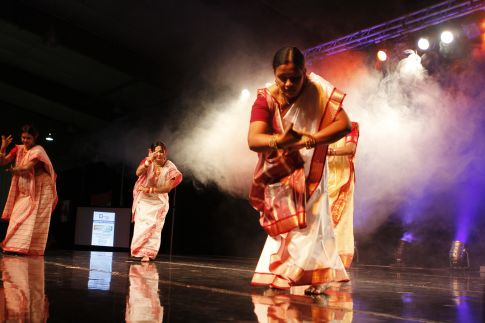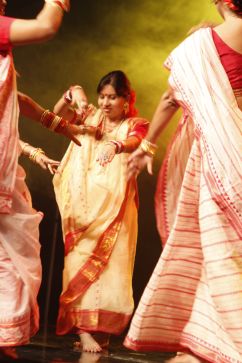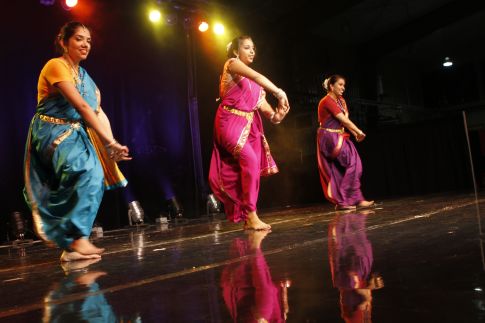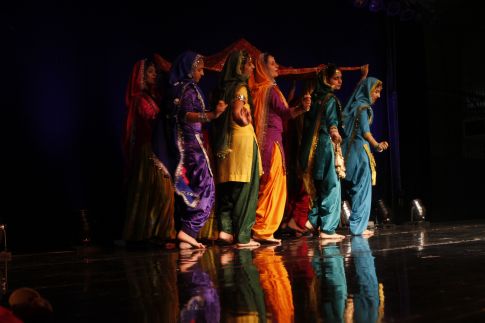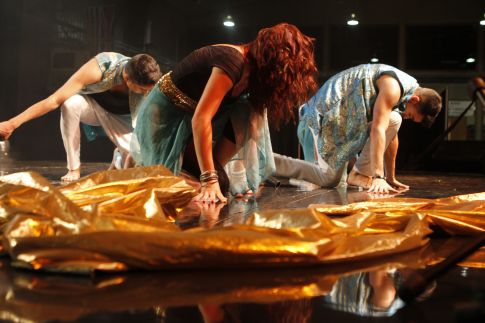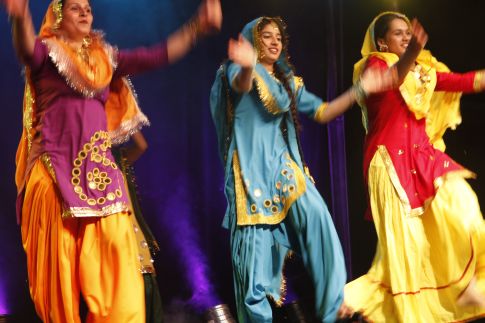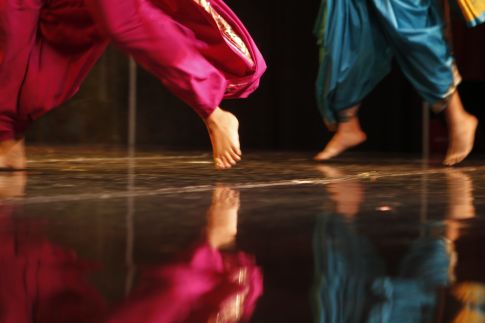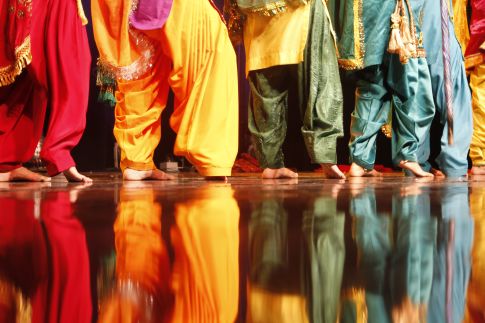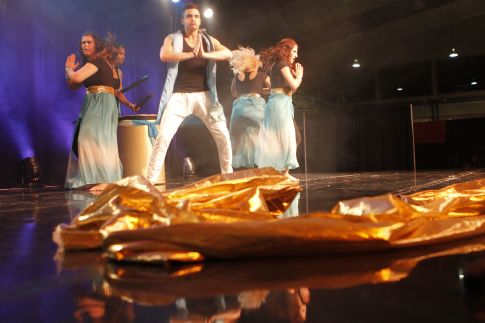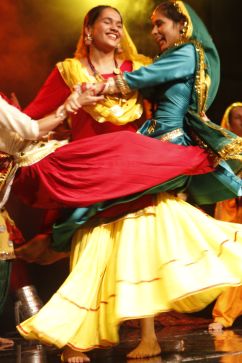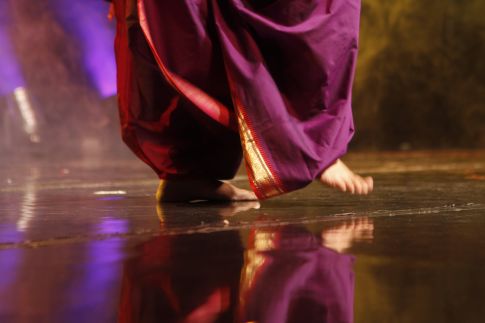 There’s something about Indian dance that mesmorizes me. It could be the beautiful costumes. It could be the allure of slow and precise dancing, predominantly done by women. It could be their beauty. It could be the unity woven throughout the various dances that bring the women together as a combined force that’s alluring.
There’s something about Indian dance that mesmorizes me. It could be the beautiful costumes. It could be the allure of slow and precise dancing, predominantly done by women. It could be their beauty. It could be the unity woven throughout the various dances that bring the women together as a combined force that’s alluring.
Whatever it is, the Indian dance performance at Winnipeg’s Folkorama event in August was a night to remember.
While eating butter chicken, tandoori, chick peas, naan, samosa and sweet desserts, we watched, or rather gazed at the myriad of performances that hit the stage before us.
Then came out the Kingfisher Beer and the Old Monk Rum around coffee time.
It made me wonder what it would feel like to wear a Sari to work or as part of a cultural tradition I could call my own. European cultures for the most part only wear traditional attire in dance and musical rituals rather than as an integrated part of their every day life.
How boring I thought as I pondered this. While I love fashion, wouldn’t it be cool if your culture was to wear something never to be found in a fashion magazine or in a mall chained store that you find the “same ole same ole’ in whether you’re in Dubai, Paris, Sydney or Miami.
There are various dances in India worth noting.
The Gondhal, an established religious practice of most of the castes in Maharashtra, is an educative, entertaining and important tradition. It is believed that if the Gonhal is performed in the house during auspicious occasions like weddings and thread ceremonies, then our life doesn’t become chaotic. I could use a little Gondhal if that’s the case. The Gondhal a decade ago was very different than the one performed now as the new generations have incorporated new modern things into the mix.
The Lavani is a genre of music popular in Maharashtra and southern Madhya Pradesh, Karnataka nad Tamil Nadu. It is a combination of song and dance, which particularly performed to the beats of Dholak, a percussion instrument. It is noted for its powerful rhythm and erotic sentiment. Lavani contributed to the development of Marathi folk theatre and it is often performed by female performers wearing nine-yard long saris.
The songs are sung in a quick tempo. Traditionally, this genre of folk dance deals with different and varied subject matters, such as society, religion, politics and romance. The songs in ‘Lavani’ are often erotic in sentiment and the dialogues tend to be pungent in socio-political satire. Originally, it was used as a form of entertainment and morale booster to tired soldiers.
Below are some of the shots I took during the Folkorama performance which included a variety of Indian dancers.

Renee Blodgett is the founder of We Blog the World. The site combines the magic of an online culture and travel magazine with a global blog network and has contributors from every continent in the world. Having lived in 10 countries and explored nearly 80, she is an avid traveler, and a lover, observer and participant in cultural diversity.
She is also the CEO and founder of Magic Sauce Media, a new media services consultancy focused on viral marketing, social media, branding, events and PR. For over 20 years, she has helped companies from 12 countries get traction in the market. Known for her global and organic approach to product and corporate launches, Renee practices what she pitches and as an active user of social media, she helps clients navigate digital waters from around the world. Renee has been blogging for over 16 years and regularly writes on her personal blog Down the Avenue, Huffington Post, BlogHer, We Blog the World and other sites. She was ranked #12 Social Media Influencer by Forbes Magazine and is listed as a new media influencer and game changer on various sites and books on the new media revolution. In 2013, she was listed as the 6th most influential woman in social media by Forbes Magazine on a Top 20 List.
Her passion for art, storytelling and photography led to the launch of Magic Sauce Photography, which is a visual extension of her writing, the result of which has led to producing six photo books: Galapagos Islands, London, South Africa, Rome, Urbanization and Ecuador.
Renee is also the co-founder of Traveling Geeks, an initiative that brings entrepreneurs, thought leaders, bloggers, creators, curators and influencers to other countries to share and learn from peers, governments, corporations, and the general public in order to educate, share, evaluate, and promote innovative technologies.

